iPad 4 (Late 2012) Review
by Anand Lal Shimpi on December 6, 2012 4:40 PM ESTDisplay Analysis
The 4th gen iPad retains the same Retina Display as its predecessor. The 9.7-inch 2048 x 1536 display looks just as good as it did earlier this year. Brightness, black levels and contrast are all very good. The real advantage however is color accuracy thanks to Apple's factory calibration on all of its devices with an integrated display.
As with all of Apple's other Retina Displays, software support is made easy through integer scaling. The 2048 x 1536 resolution is an increase of 2x in both dimensions over the standard iPad/iPad mini resolution. App developers simply have to provide 2x scaled assets in order to make the most of the Retina Display. Deciding what image to load (standard res or 2x scaled) is handled automatically, the developer just needs to ensure that it's supplying both sets of images for the best user experience. Games can run either at the panel's native resolution, or run at a non-native offscreen resolution and simply scale up to the panel resolution if the title's performance requirements are too high (more on this later).
All first party apps and most of the 3rd party iPad apps I use on a regular basis are already Retina aware.
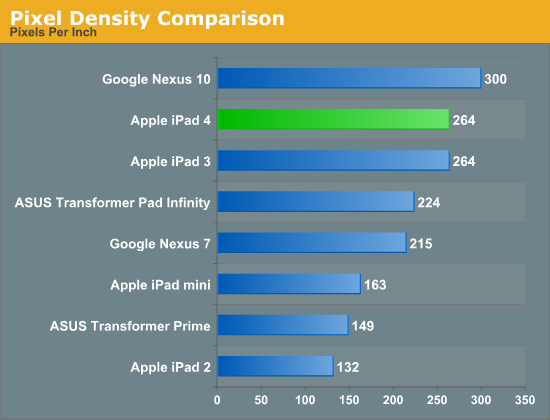
The big advantage the Retina Display offers over other iPads is a much better text reading experience. Individual letters look so much smoother:

I borrowed the paragraph shots below from our iPad mini review to give a better idea of how much of an improvement the Retina Display delivers when reading text:
Images also benefit from the Retina panel, but the advantage here ends up mostly being the accuracy of the display rather than the pixel density.

iPad mini (left) vs. iPad 4 (right)
With the exception of the 3rd generation iPad, only the Nexus 10 boasts any real competition to the iPad 4's display. I don't have a Nexus 10 on hand but Brian ran our suite of display tests on his review unit. Let's see how the two stack up in basic brightness and contrast measurements:
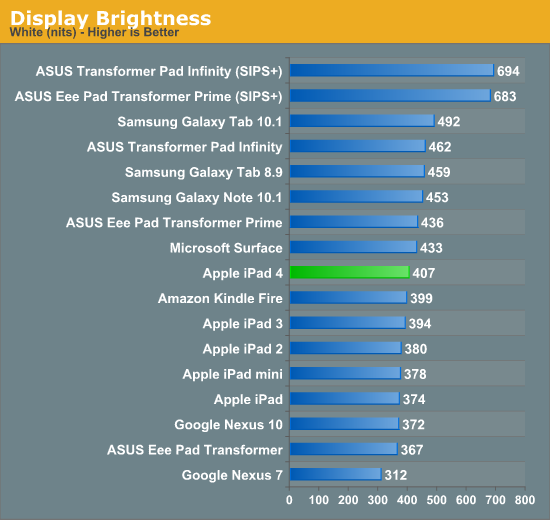
It's amazing to me that 400 nits on a nearly 10-inch display is simply middle of the pack now in modern tablets. This is just awesome. Look at any of our value notebook reviews and you'll find a bunch of displays that typically max out at sub 300 nits. It's no wonder that tablet sales are doing very well among consumers.
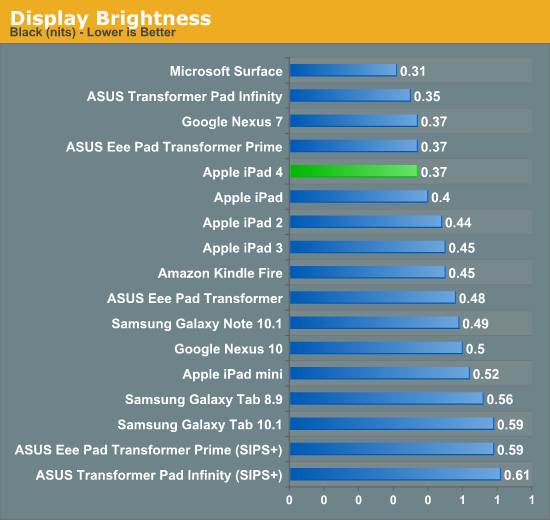
Black levels are good on the 4th generation iPad. Microsoft still holds the clear lead in black levels with its Surface RT, thanks to the tablet's bonded coverglass and display stack.
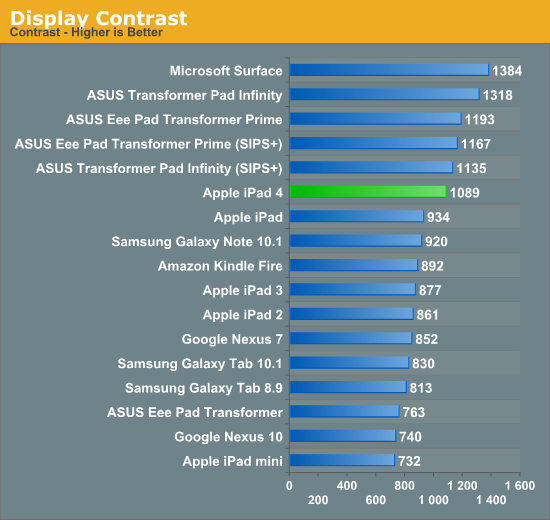
Overall contrast ratio is very good on the iPad 4. I measured a significant improvement over my iPad 3, although I suspect that has to do more with improvements to panel manufacturing than anything more deliberate.
Maintaining good brightness while pushing pixel density is only part of the equation. What made the iPad 3's display so great was that it shipped well calibrated from the factory. I assumed the same would be true for the 4th generation iPad, but I still needed to test to confirm.
To evaluate color accuracy I turned to our own Chris Heinonen's CalMAN smartphone/tablet workflow. We'll start off by looking at the calibrated white point for these tablets. What you're looking for here is a number close to 6500K:
Apple has been drifting north of 6503K for a while now. Variation in white point does seem to track well with individual panel makers in the iPad, so you may see numbers move around here depending on your luck of the draw. We've seen this in other iDevices in the past where whites will range from yellow to blue depending on what panel you end up with.
The next three charts look at accuracy represented as a difference between various source colors and what's reproduced on the display. The results are presented as average dE2000, with lower numbers being better.
First up is Grayscale performance, here we're looking at the accuracy of black, white and 19 shades of gray spread in between the two extremes:
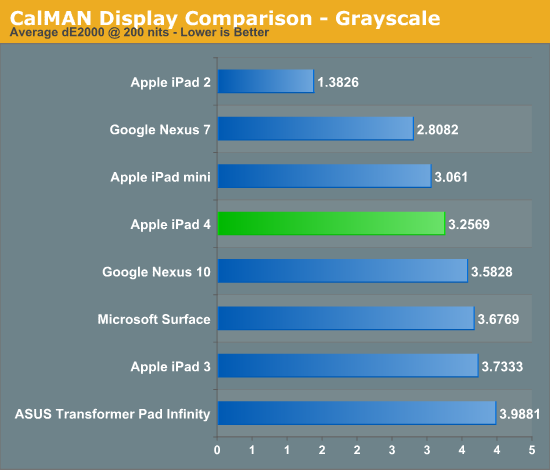
The 4th gen iPad does pretty well here, just edging out the Nexus 10 but losing to the iPad 2 and mini. Pretty much all of the tablets do a good job here at accurately reproducing grays.
First in our color accuracy tests is a saturation sweep. Here we're looking at 20%, 40%, 60%, 80% and 100% saturations of red, blue, green, magenta, yellow and cyan.
This is what you get with the iPad's pre-calibrated Retina Display: appreciably better color accuracy than any other tablet on the market today. I even measured an improvement in color accuracy compared to last year's iPad 3, however my iPad 3 was from the initial runs of production. I have noticed pretty significant variance between color accuracy between iPads. The results are always good, but some are definitely better than others.
Gamut CIE Chart
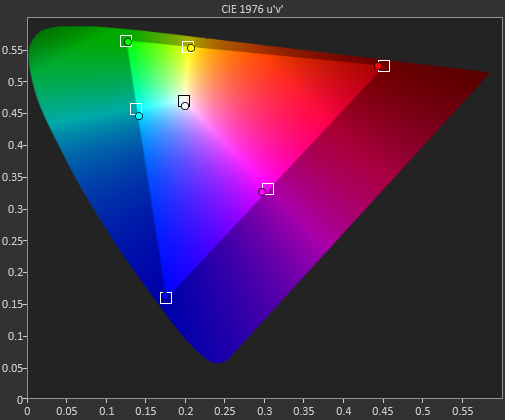
Saturation CIE Chart
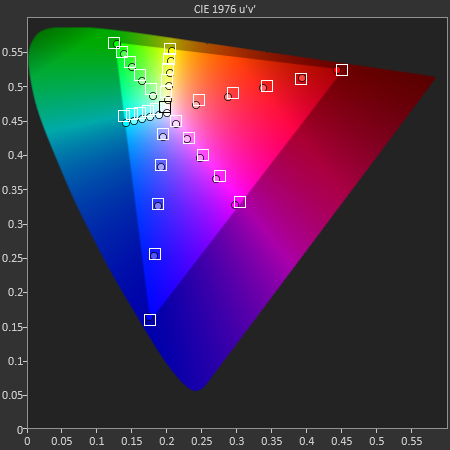
For our final accuracy test we're looking at the difference between a Gretag Macbeth colorchecker chart and the rendered swatches on these displays. Once again, lower numbers are better.
Many of the panels used here are actually good panels, the difference really boils down to calibration. Apple continues to dominate in terms of calibrated color accuracy. The 4th gen iPad's display remains the best in the industry from a color accuracy standpoint.
GMB Color Checker
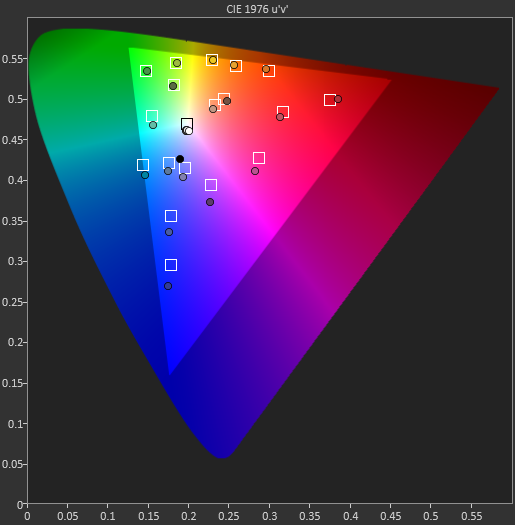



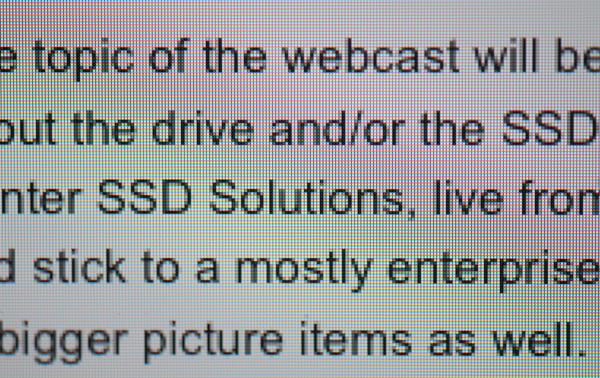
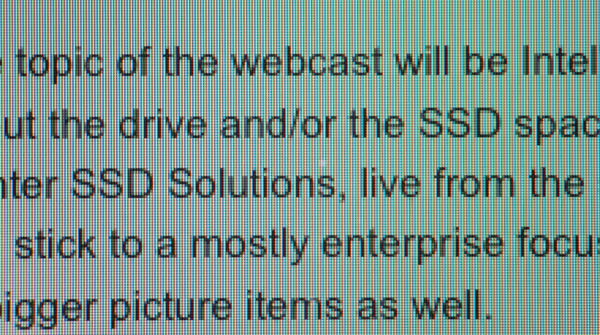
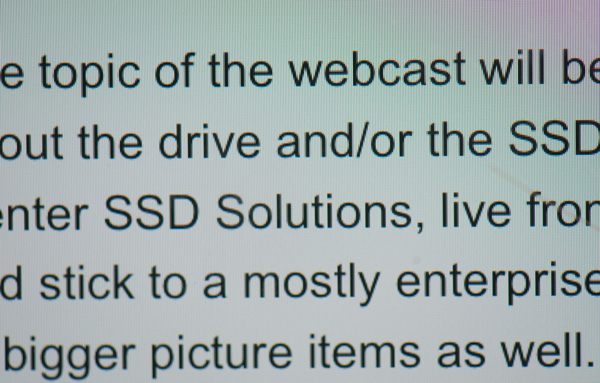
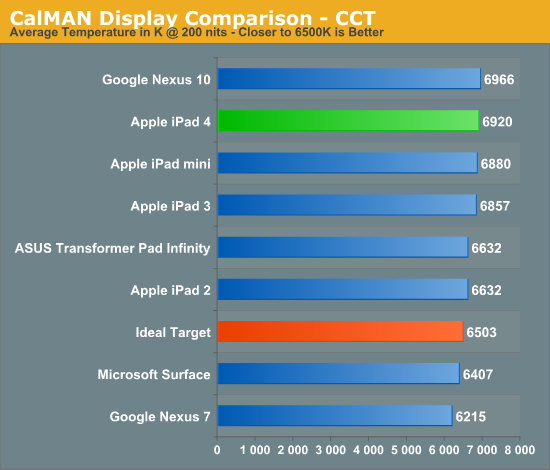
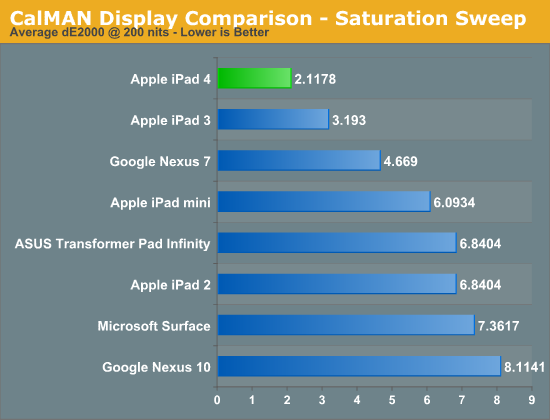
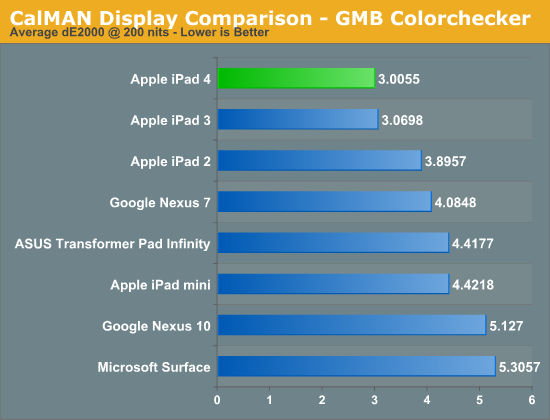








113 Comments
View All Comments
Pazz - Thursday, December 6, 2012 - link
Just noticed grammatical correction required for "An Matter of Cost and Timing".Alucard291 - Sunday, December 9, 2012 - link
"Produce boring products" that really summarises apple in the last half a year or so.name99 - Sunday, December 9, 2012 - link
Really? Not "produce products that will sell twice as well as their predecessors"?I'm sorry Apple is not entertaining you --- perhaps you did not realize they were not in that business? You might prefer to follow MS whose ups and downs over the next year should provide ample entertainment.
danielfranklin - Thursday, December 6, 2012 - link
Sorry Anand, ive just noticed the Ipad resolution on page is is listed as 2408 x 1536 instead of 2048 x 1536.Other than that thank you again for your reviews, your in-site and true technical breakdown is the best on the internet, you have been my favorite reviewer since this site started.
danielfranklin - Thursday, December 6, 2012 - link
Page two that is meant to read.Looks like its going to be that kind of day.
whodakat - Thursday, December 6, 2012 - link
Google really impresses me. It has to be hard work to pack in all the best specs and still get your ass handed to you.coder543 - Thursday, December 6, 2012 - link
in what way? I would argue that the Nexus 10 is a much better tablet. Stereo audio instead of mono, support for multiple separate users (excellent for families), a Proper aspect ratio... one appropriate for actually consuming media, unlike that iPad. A dedicated HDMI out is a nice touch. There are many, many things I could list. I'm really not even sure what you're talking about in your comment -- color calibration? I'm sure that will be the first thing most consumers check...EnzoFX - Thursday, December 6, 2012 - link
There isn't one that is clearly better. The iOS and app store is the biggest thing the iPad has for the average consumer. Proper aspect ratio? Who are you to say what's proper? lol Seriously though, it depends on WHAT you're consuming. 4x3 is ideal for reading, that is books and web browsing. THIS is why Apple sticks with 4x3, and it makes COMPLETE sense. Most of what people do is consume webpages, not videos. Webpages are the focus, and rightly so. I always say, if you want a more serious movie device, watch them on your TV. haha. Color calibration isn't something to check, you notice it right away by looking at it, that it's a more realistic representation of photos, etc. Your arguments are severely flawed, but yes the Nexus 10 is a comparable device and worthy of consideration.Zink - Thursday, December 6, 2012 - link
Tablet is for reading, LCD in living room is for TV and movies. The iPad and HP Playbook at 4:3 are doing it right. 10" 16:10 is ok, just not after adding in soft keys and notification bar that cut down landscape height.coder543 - Thursday, December 6, 2012 - link
HP doesn't make the playbook. Making random observations doesn't impact anything, as reading on 16:10 is extremely feasible.